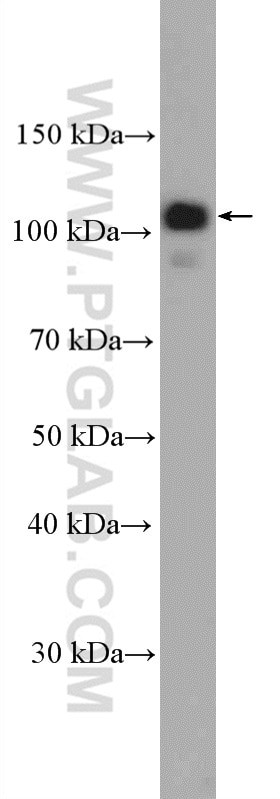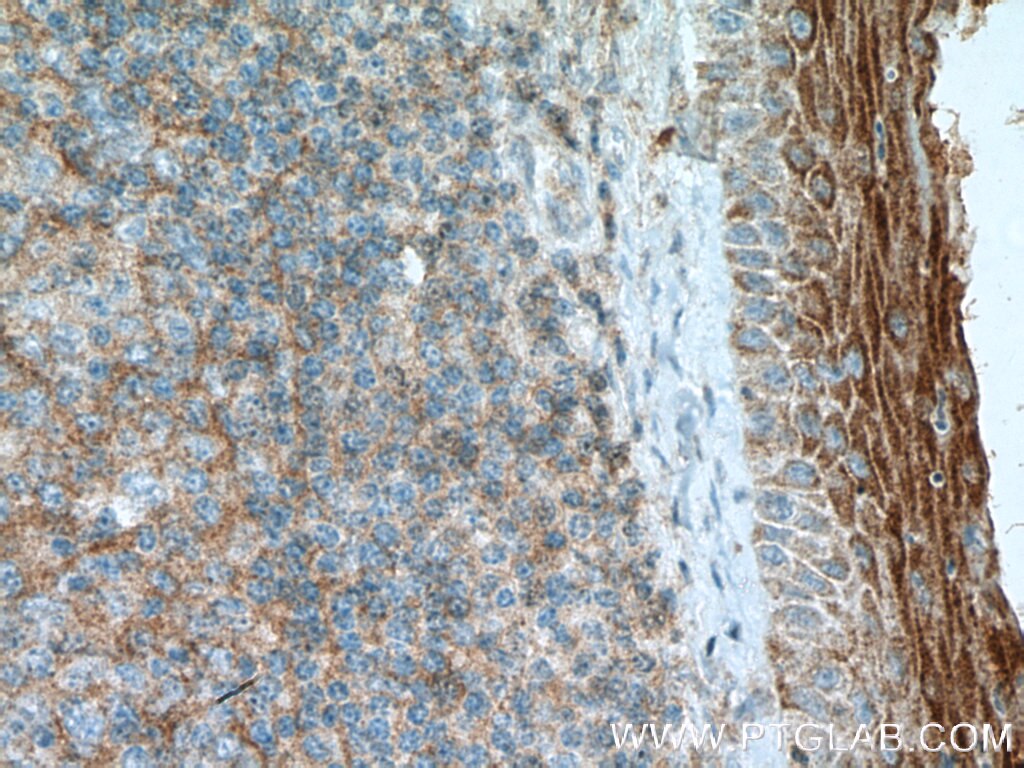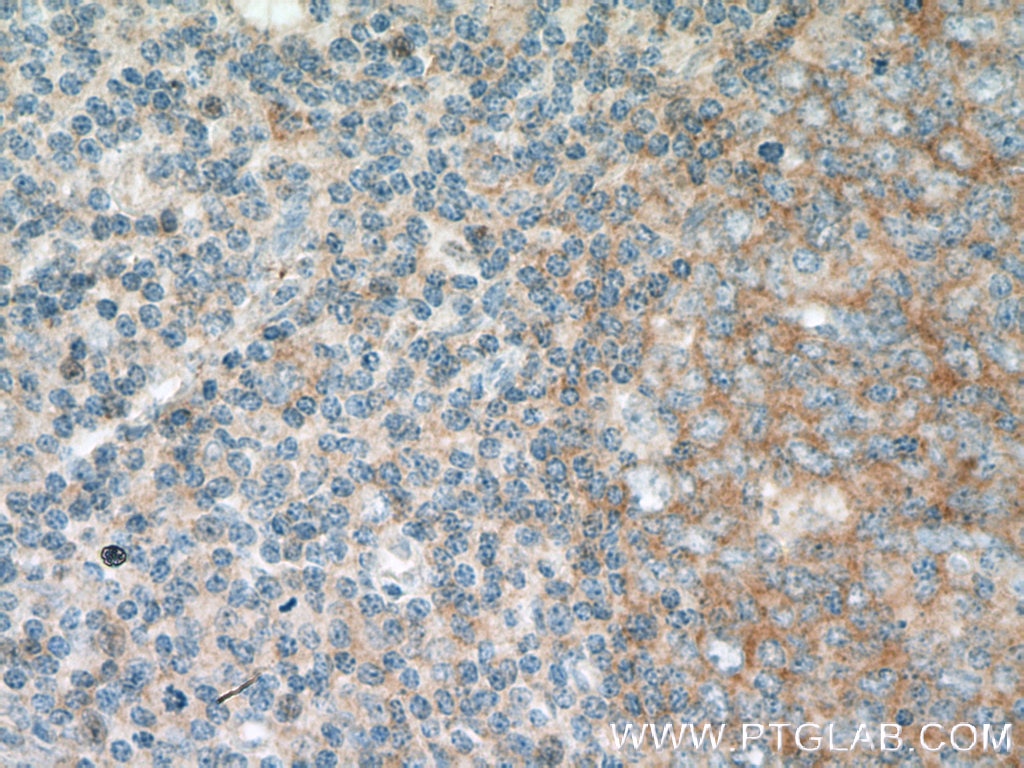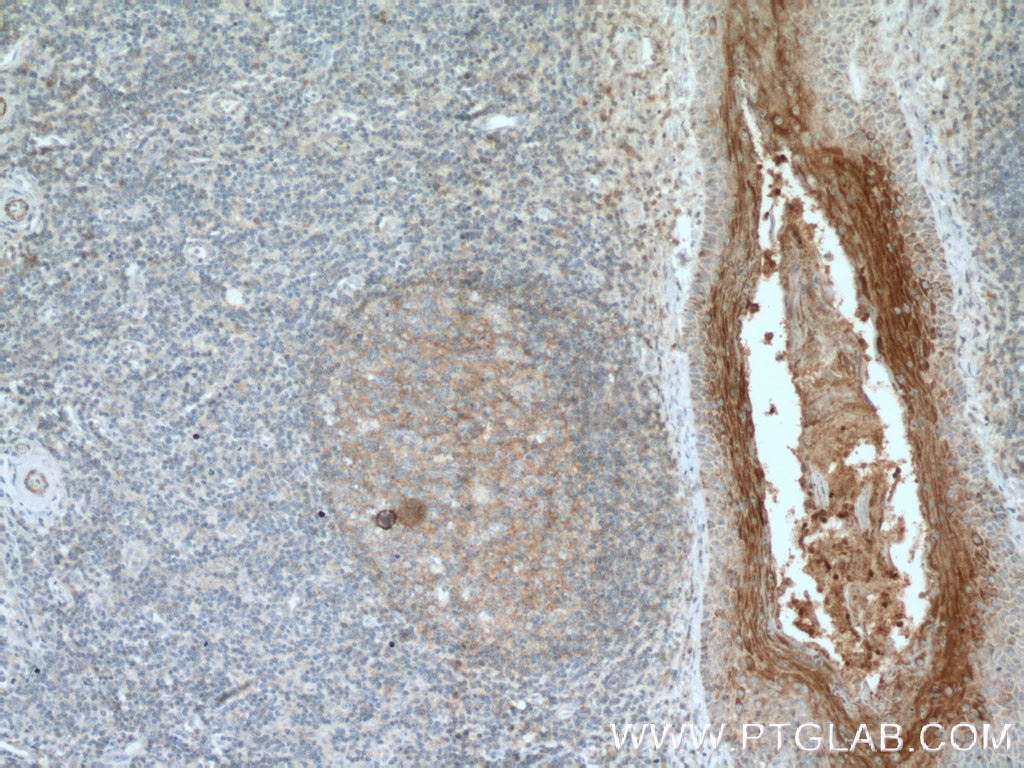FCHO1 Polyclonal antibody
FCHO1 Polyclonal Antibody for WB, IHC, ELISA
Host / Isotype
Rabbit / IgG
Reactivity
human
Applications
WB, IHC, ELISA
Conjugate
Unconjugated
Cat no : 26767-1-AP
Synonyms
Validation Data Gallery
Tested Applications
| Positive WB detected in | Raji cells |
| Positive IHC detected in | human tonsillitis tissue Note: suggested antigen retrieval with TE buffer pH 9.0; (*) Alternatively, antigen retrieval may be performed with citrate buffer pH 6.0 |
Recommended dilution
| Application | Dilution |
|---|---|
| Western Blot (WB) | WB : 1:1000-1:4000 |
| Immunohistochemistry (IHC) | IHC : 1:50-1:500 |
| It is recommended that this reagent should be titrated in each testing system to obtain optimal results. | |
| Sample-dependent, Check data in validation data gallery. | |
Product Information
The immunogen of 26767-1-AP is FCHO1 Fusion Protein expressed in E. coli.
| Tested Reactivity | human |
| Host / Isotype | Rabbit / IgG |
| Class | Polyclonal |
| Type | Antibody |
| Immunogen | FCHO1 fusion protein Ag25291 |
| Full Name | FCH domain only 1 |
| Calculated Molecular Weight | 97 kDa |
| Observed Molecular Weight | 110 kDa |
| GenBank Accession Number | BC028021 |
| Gene Symbol | FCHO1 |
| Gene ID (NCBI) | 23149 |
| RRID | AB_2880626 |
| Conjugate | Unconjugated |
| Form | Liquid |
| Purification Method | Antigen affinity purification |
| Storage Buffer | PBS with 0.02% sodium azide and 50% glycerol pH 7.3. |
| Storage Conditions | Store at -20°C. Stable for one year after shipment. Aliquoting is unnecessary for -20oC storage. 20ul sizes contain 0.1% BSA. |
Background Information
FCHO1 is composed of 889 amino acid residues and contains an N-terminal FES-CIP4 homology (FCH) domain and an evolutionarily conserved C-terminal FCHO homology (FOH) domain. FCHO1 functions in an early step of clathrin-mediated endocytosis. FCHO1 is required for plasma membrane clathrin-coated vesicle (CCV) budding and marked sites of CCV formation (PMID: 20448150).
Protocols
| Product Specific Protocols | |
|---|---|
| WB protocol for FCHO1 antibody 26767-1-AP | Download protocol |
| IHC protocol for FCHO1 antibody 26767-1-AP | Download protocol |
| Standard Protocols | |
|---|---|
| Click here to view our Standard Protocols |





